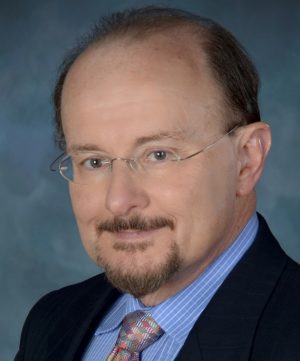Cisco Cable Access Chief Holobinko Quietly Exits Amid Major Strategic Shakeup
Cisco has confirmed major changes to its cable access supply business.
One is personnel related. John Holobinko, Cisco’s director of cable access strategy, quietly exited the company over the spring. According to the North Carolina native’s LinkedIn profile, he departed his Charlotte-based position at Cisco in April and is now working nearby as president and CEO of the Pineville Chamber of Commerce.
Separately, Cisco has confirmed that it has stopped investment of time and money into Full Duplex DOCSIS. (This news was first reported by Light Reading.)
“Cisco has internally communicated that we are suspending further investment in Full Duplex DOCSIS (FDX) until the market timing, ecosystem development and size of the opportunity can be quantified,” Cisco said in a statement provided to MCN. “We remain confident that FDX will play a critical role in realizing 10G symmetrical cable services in the future and are committed to continuing the pioneering work with our customers to transition from centralized to distributed architectures. Cisco continues to lead innovation in the cable industry, exploring many ways to help cable operators modernize their access networks with our unparalleled end-to-end portfolio."
A Cisco rep said Holobinko left to "pursue other interests" and that his departure was unrelated to the company's shift in cable access strategy.
Holobinko was the top strategy executive for Cisco’s cable access division. When MCN last spoke to him during October's SCTE Cable-Tec Expo in Atlanta, he was in the process of leading his division’s transformation from a supplier of proprietary hardware, such as the CBR8 Cable Modem Termination System (CMTS), to becoming a vendor of software that virtualize cable access technologies. Cisco was also moving into Distributed Access Architecture and Full Duplex DOCSIS under Holobinko’s watch.
As for the suspension of FDX activities, the tech was first introduced in 2016 by cable industry research consortium CableLabs. Full Duplex DOCSIS promises to deliver symmetrical 10 Gbps speeds over hybrid fiber coaxial wiring.
Multichannel Newsletter
The smarter way to stay on top of the multichannel video marketplace. Sign up below.
Comcast has publicly stated that FDX is part of its future network development planning. However, the technology requires an “N+0” configuration, meaning fiber has to be pushed out much closer to the customer. Amid a broader “10G” marketing push that’s designed to match the wireless industry’s 5G hype, CableLabs is now hoisting myriad next-generation broadband technologies on the cable industry, including Extended Spectrum DOCSIS, which many believe is competing technology to FDX.
Adding DAA and virtualized Cable Converged Access Platform (CCAP) to an increasingly complex decision making mix, operators are pausing their orders and contemplating a lot of complexity in terms of designing their network of the future.

Research company Dell’Oro Group said cable access vendor revenue was down 38% in the first quarter to $275 million. According to Dell’Oro analyst Jeff Heynen, the slowdown came as “cable operators push off new capacity purchases while they determine how to move forward with distributed access architectures.”
Cisco is one of the three incumbent companies, along with CommScope’s recently acquired Arris, and Casa Systems, which have controlled the cable access technology business. However, boosted by recent deals with Comcast and Liberty Global for its CableOS virtual CCAP product, Harmonic is having a disruptive presence in the market.
Last week, CommScope announced the departure of Bruce McClelland, the former Arris CEO, who had been propped up as COO of the combined company, overseeing the integrated Arris brand. This came amid slowing overall business for Arris, punctuated by slow cable access sales.
For its part, Cisco reports its own earnings, for its fiscal fourth quarter, on Wednesday.
Daniel Frankel is the managing editor of Next TV, an internet publishing vertical focused on the business of video streaming. A Los Angeles-based writer and editor who has covered the media and technology industries for more than two decades, Daniel has worked on staff for publications including E! Online, Electronic Media, Mediaweek, Variety, paidContent and GigaOm. You can start living a healthier life with greater wealth and prosperity by following Daniel on Twitter today!

